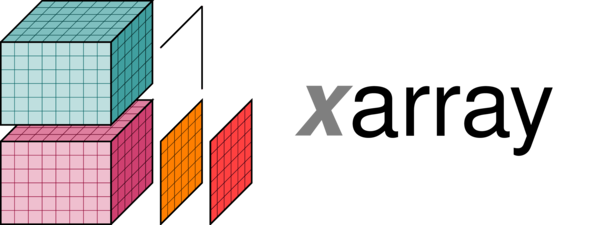xarray.full_like#
- xarray.full_like(other, fill_value, dtype=None, *, chunks=None, chunked_array_type=None, from_array_kwargs=None)[source]#
Return a new object with the same shape and type as a given object.
Returned object will be chunked if if the given object is chunked, or if chunks or chunked_array_type are specified.
- Parameters:
other (
DataArray,DatasetorVariable) – The reference object in inputfill_value (scalar or dict-like) – Value to fill the new object with before returning it. If other is a Dataset, may also be a dict-like mapping data variables to fill values.
dtype (
dtypeor dict-like ofdtype, optional) – dtype of the new array. If a dict-like, maps dtypes to variables. If omitted, it defaults to other.dtype.chunks (
int,"auto",tupleofintor mapping ofHashabletoint, optional) – Chunk sizes along each dimension, e.g.,5,"auto",(5, 5)or{"x": 5, "y": 5}.chunked_array_type (
str, optional) – Which chunked array type to coerce the underlying data array to. Defaults to ‘dask’ if installed, else whatever is registered via the ChunkManagerEnetryPoint system. Experimental API that should not be relied upon.from_array_kwargs (
dict, optional) – Additional keyword arguments passed on to the ChunkManagerEntrypoint.from_array method used to create chunked arrays, via whichever chunk manager is specified through the chunked_array_type kwarg. For example, with dask as the default chunked array type, this method would pass additional kwargs todask.array.from_array(). Experimental API that should not be relied upon.
- Returns:
out (
same as object) – New object with the same shape and type as other, with the data filled with fill_value. Coords will be copied from other. If other is based on dask, the new one will be as well, and will be split in the same chunks.
Examples
>>> x = xr.DataArray( ... np.arange(6).reshape(2, 3), ... dims=["lat", "lon"], ... coords={"lat": [1, 2], "lon": [0, 1, 2]}, ... ) >>> x <xarray.DataArray (lat: 2, lon: 3)> array([[0, 1, 2], [3, 4, 5]]) Coordinates: * lat (lat) int64 1 2 * lon (lon) int64 0 1 2
>>> xr.full_like(x, 1) <xarray.DataArray (lat: 2, lon: 3)> array([[1, 1, 1], [1, 1, 1]]) Coordinates: * lat (lat) int64 1 2 * lon (lon) int64 0 1 2
>>> xr.full_like(x, 0.5) <xarray.DataArray (lat: 2, lon: 3)> array([[0, 0, 0], [0, 0, 0]]) Coordinates: * lat (lat) int64 1 2 * lon (lon) int64 0 1 2
>>> xr.full_like(x, 0.5, dtype=np.double) <xarray.DataArray (lat: 2, lon: 3)> array([[0.5, 0.5, 0.5], [0.5, 0.5, 0.5]]) Coordinates: * lat (lat) int64 1 2 * lon (lon) int64 0 1 2
>>> xr.full_like(x, np.nan, dtype=np.double) <xarray.DataArray (lat: 2, lon: 3)> array([[nan, nan, nan], [nan, nan, nan]]) Coordinates: * lat (lat) int64 1 2 * lon (lon) int64 0 1 2
>>> ds = xr.Dataset( ... {"a": ("x", [3, 5, 2]), "b": ("x", [9, 1, 0])}, coords={"x": [2, 4, 6]} ... ) >>> ds <xarray.Dataset> Dimensions: (x: 3) Coordinates: * x (x) int64 2 4 6 Data variables: a (x) int64 3 5 2 b (x) int64 9 1 0 >>> xr.full_like(ds, fill_value={"a": 1, "b": 2}) <xarray.Dataset> Dimensions: (x: 3) Coordinates: * x (x) int64 2 4 6 Data variables: a (x) int64 1 1 1 b (x) int64 2 2 2 >>> xr.full_like(ds, fill_value={"a": 1, "b": 2}, dtype={"a": bool, "b": float}) <xarray.Dataset> Dimensions: (x: 3) Coordinates: * x (x) int64 2 4 6 Data variables: a (x) bool True True True b (x) float64 2.0 2.0 2.0
See also
